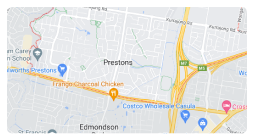In the heart of Sydney’s thriving suburbs, mould has become a common but underestimated household threat. It grows quietly in corners, behind cupboards, and under tiles—often unnoticed until it causes visible damage or worsens health conditions.
What makes mould such a challenge for Sydney residents is its resilience. Even with new builds and renovations, moisture from coastal humidity, blocked ventilation, or poor post-construction cleaning creates the perfect environment for growth. But here’s the kicker—not all mould is the same.
Different types of mould behave differently, require unique treatment approaches, and pose varying levels of risk. If you’re wondering which mould might be affecting your home, and how mould cleaning services in Sydneyhandle each type, this article breaks it down clearly.
Why Sydney Homes Are Vulnerable to Mould
Sydney’s coastal climate, older housing stock in inner suburbs, and increasing construction in western regions have created the perfect storm for indoor mould growth.
Excess moisture, poor ventilation, leaks, and construction debris all contribute to mould problems. In fact, homes that haven’t undergone proper builders cleaning in Sydneyoften retain fine dust, plaster residues, and dampness in cavities—triggering early-stage mould within weeks.
The 5 Most Common Types of Mould Found in Sydney Homes
Each type of mould has its own characteristics, risks, and cleaning requirements. Here’s what you need to know:
1. Aspergillus – The Allergy Trigger
Aspergillus is one of the most common indoor mould types in Sydney. You’ll often find it around air conditioning units, in dust, or clinging to damp window frames.
Risks:While generally not dangerous to healthy individuals, it can cause allergic reactions, respiratory issues, and infections in people with weakened immune systems.
How Cleaning Services Handle It:
- HEPA vacuuming of spores in carpets and furniture
- Air filtration and fogging
- Treating HVAC systems with antimicrobial solutions
- Thorough dust removal as part of advanced mould cleaning services in Sydneyoffers
2. Cladosporium – The Sneaky Black Spots
Cladosporium appears as black or green patches on wood, fabric, and painted surfaces. It thrives in both warm and cool conditions—so your air vents, skirting boards, and even curtain backs are fair game.
Risks:Exposure can trigger skin rashes, sinus infections, and eye irritation. While not as toxic as other black moulds, it spreads rapidly.
How Cleaning Services Handle It:
- Surface removal using safe fungicides
- Sealing porous materials
- Targeted fogging and ventilation improvements
- Pre-treatment inspections using moisture metres from certified mould assessment Sydneyspecialists
3. Stachybotrys Chartarum – Toxic Black Mould
This one’s the most feared—and for good reason. Often referred to as “toxic black mould,” Stachybotrys thrives in areas with prolonged dampness, like after water damage or roof leaks.
Risks:Produces mycotoxins that can cause serious health issues including chronic fatigue, neurological problems, and respiratory distress.
How Cleaning Services Handle It:
- Immediate containment of the affected area
- Professional PPE and removal of infected materials (drywall, insulation)
- HEPA filtration and negative air pressure setups
- Post-removal decontamination and mould-resistant sealing
This is never a job for DIY—it needs fully certified mould cleaning services in Sydneywith experience in toxic exposure protocols.
4. Penicillium – The Rapid Spreader
Penicillium is commonly blue or green and spreads like wildfire. It often appears after leaks, especially in walls, insulation, and mattresses.
Risks:Can exacerbate asthma, cause sinus congestion, and lead to long-term respiratory conditions if left untreated.
How Cleaning Services Handle It:
- Air scrubbing with industrial filtration units
- Soft material assessment—often replacement is required
- Preventive solutions to lower interior humidity
- Recommendations for follow-up mould assessment Sydneyprofessionals to track re-emergence
5. Alternaria – The Bathroom Invader
This dark green or brown mould loves moisture and is typically found in bathrooms, showers, or around leaky pipes.
Risks:A common allergen that causes sneezing, coughing, and asthma flare-ups.
How Cleaning Services Handle It:
- Steam cleaning of tiles and grout
- Mould-resistant sealants applied post-treatment
- Exhaust fan installation or repair
- Integration with construction cleaning Sydneystrategies when bathrooms are newly built or renovated
Why Proper Cleaning After Construction Matters
Post-renovation or build mould issues often begin because builders cleaning in Sydneyis rushed or incomplete. Dust, wood particles, and hidden damp areas under cabinetry or in ceiling voids become breeding grounds when left unaddressed.

Professional construction cleaning in Sydneyincludes:
- Deep dust extraction from cavities and corners
- Surface disinfection using mould-inhibiting cleaners
- Moisture detection in enclosed spaces
- Ensuring site readiness for living conditions
By investing in proper cleaning early, homeowners reduce their risk of future remediation costs.
What Sets Professional Mould Cleaning Services Apart?
A professional service doesn’t just treat what’s visible—it tracks and neutralises the underlying cause. Here’s what a reputable Sydney mould cleaning company brings to the table:
- Moisture Mapping: Pinpointing leaks, condensation, and humidity traps
- Containment Zones: Isolating affected areas to prevent spread
- HEPA Filtration: Capturing airborne spores
- Air Quality Testing: Ensuring a safe living environment post-cleanup
- Full Remediation Plan: Guided by experienced mould assessment teams
Unlike a regular cleaner, they’re trained in health protocols, structural drying, and certified removal procedures based on Australian standards.
How to Tell It’s Time to Call In the Experts
Mould may be active even when you don’t see it. These are the warning signs Sydney homeowners often overlook:
- Persistent musty smell despite cleaning
- Unexplained allergies that get worse indoors
- Peeling paint or bubbling walls
- Visible mould patches returning after you’ve scrubbed them
If any of these sound familiar, booking a mould assessment in Sydneyis your best first step. It helps determine the extent of contamination and guides the next stage of safe and effective treatment.
Frequently Asked Questions
Can I clean mould myself?
Small surface patches on tiles or windows can be treated with vinegar or over-the-counter mould sprays. But once it spreads, returns, or covers large areas, it’s essential to call in trained mould cleaning services in Sydney.
How much does professional mould cleaning cost in Sydney?
It depends on the size of the area and the level of contamination. Basic treatments can start from $250, while full remediation after assessment may range into the thousands for larger or toxic outbreaks.
What’s the difference between builders cleaning and mould cleaning?
Builders cleaningfocuses on removing dust, debris, and surface contaminants post-construction. Mould cleaninginvolves biological decontamination, often with structural drying, antimicrobial agents, and air filtration. Both services play a role in maintaining a mould-free environment.
How often should I get a mould assessment?
Every 1–2 years for homes in high-humidity suburbs, or immediately after water damage, renovations, or health concerns. Many mould assessment Sydneyproviders offer packages for ongoing monitoring.
Ready to Take Control of Mould in Your Home?
Don’t wait until mould takes a toll on your family’s health or your property’s structure.
Whether you’re dealing with post-construction moisture or long-standing mould colonies, choose a trusted team offering complete mould assessment and cleaning services in Sydney.











